Space: defence science and technology capability
Dstl provides the UK with advanced space science, technology, services and advice to monitor, protect and defend our interests in and through space.
Dstl’s space expertise ensures the UK fully exploits the potential of space for defence and security. We research and develop the latest science and technology and give advanced space engineering to support future UK defence missions in space and the UK’s Defence Space Strategy. Some of the areas we’re focusing on include:
- satellite communications, intelligence and surveillance from space
- monitoring and tracking objects in all orbits, to protect and defend UK interests
- a series of satellite missions to trial prototype systems and technologies for future space operations, to support the government’s ambition to form a ‘digital backbone’ in space
Pioneering space technology developments
We work with more than 100 businesses and organisations and 11 international partners to ensure the UK remains at the forefront of the latest space developments worldwide.
In 2022 we will launch our first satellites, helping to grow UK space research capabilities. The Prometheus 2 CubeSats will operate in low Earth orbit, 550 kilometres above the planet.
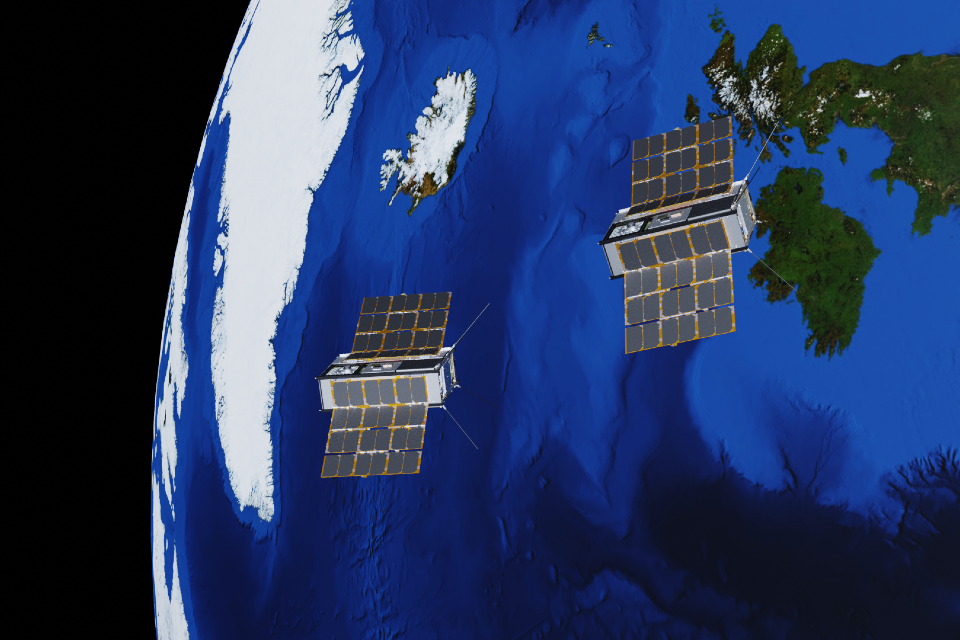
Dstl worked with Oxford Space Systems to develop a pioneering new space antenna technology. This will enable the UK to deploy a number of antennae in space providing more accurate and frequent satellite images. It will permit all-weather Earth observation at fine resolution, gaining unique advantages with both civil and defence applications.
And we have pioneered advances in novel space technology, working in partnership with the Defence and Security Accelerator (DASA) in areas such as satellite protection and optical (laser) communications.
Operational advantage
Dstl is the science inside the newest part of the armed forces, UK Space Command. As the UK increasingly operates as a joint force, an advanced space capability is essential to underpin our combat systems and support the other defence domains: air, land, sea and cyber.
Space technologies can give the UK operational advantage over potential adversaries. In 2020 Dstl conducted the first tasking of a commercial satellite by a UK government-owned and operated ground station for nearly 20 years. The Hermes relocatable ground station and mission operations centre improves how satellite imagery can be used by frontline commands.
Dstl and the Space Directorate are working closer than ever before as we take forward an ambitious space R&D programme, and the experiences gained from initiatives such as [Hermes] help enormously to underpin our space capability planning for the future.
Air Vice Marshal Harv Smyth, MOD’s Director Space
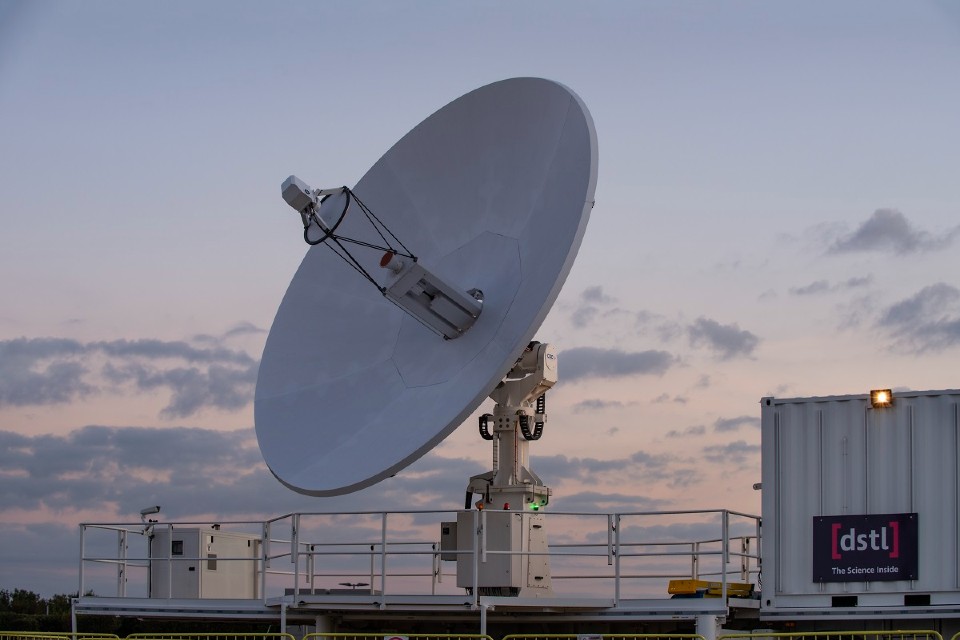
Hermes relocatable ground station and mission operations centre
A world-leader in space science
Dstl leads UK involvement in key international space science and technology activities. With these important ‘burden-sharing’ partnerships (such as our agreement with the Japanese Aerospace Exploration Agency, JAXA) the UK is better able to respond to future opportunities and threats, with an enhanced and affordable defence and security capability.
For example, Dstl recently headed an international group of defence space scientists observing the docking of 2 active orbiting satellites, to help improve performance and space safety. In the culmination of a space domain awareness experiment known as ‘Phantom Echoes 2’, scientists captured data that will improve sensors, processing and intelligence for the UK and allied governments.
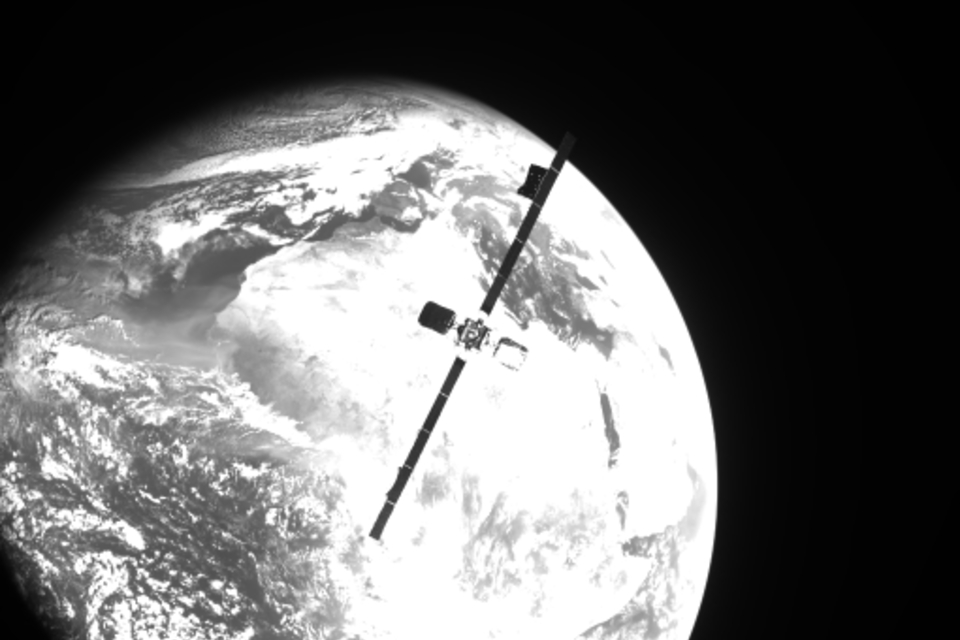
Image of Intelsat 10-02 taken by MEV-2 during the Phantom Echoes satellite docking experiment (Image courtesy of Northrop Grumman)
In 2020 we partnered with the US Naval Research Laboratory (NRL) to develop a new space weather sensing suite in a year. The joint mission, CIRCE, developed miniature sensors to improve the in-space measurement and modelling of the Earth’s upper atmosphere, which can affect satellite communications.
Initiatives like International Space Pitch Day help us find, fund and fast-track space innovation and technology alongside our allies.
We even exchange staff to help deepen cooperation and collaboration: Captain Jake Singleton is a United States Space Force officer who worked on International Space Pitch Day during his secondment with Dstl.
Future focus of space science
Through discovery and experimentation, our space capability will help to ensure the UK is a meaningful actor in space by 2030.
To enable this work, Dstl has set up our very own Space Science and Technology Hub as a centre of excellence in defence and wider government, bringing together space-related work from across Dstl and beyond. This includes establishing Spaceworks, working with Space Command and Defence Equipment and Support (DE&S) to deliver the engineering prototypes necessary to enable first-of-a-kind space demonstration.
Our keystone future project is Minerva, creating the architecture to make any space-borne satellites able to talk to each other autonomously and optimise communication. It links to all our other exciting developments such as space-based radar and space-to-ground laser communications.
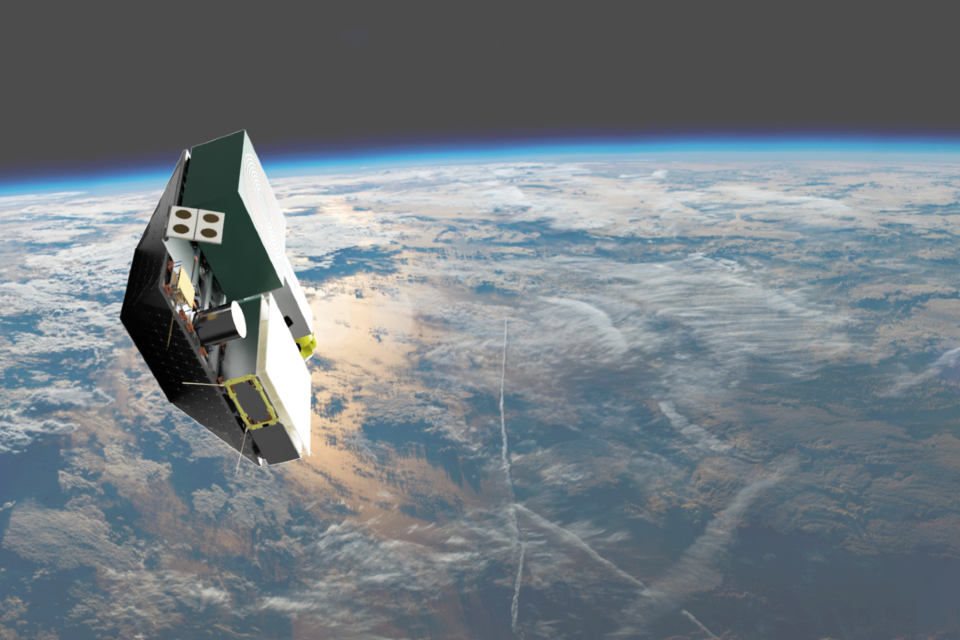
Dstl have awarded a £9.5m contract for the build of the Titania satellite.
We have recently commissioned the building of a new satellite, Titania, with our partners In-Space Missions, to undertake vital research on the next generation of communications technology.
We are designing an exciting range of ground-based sensor and information systems to track and characterise objects in orbit. This will enable us to monitor UK and Allied interests in space and potentially deter unwanted action.
Our research often has applications outside defence. For example, we work alongside the UK Space Agency and the Department for Transport to provide scientific and technical expertise. We also work with the UK Space Agency on joint technology development initiatives, through DASA.
We are planning the future of science in space with our partners Defence Science and Technology, with a renewed programme starting in April 2022.
Themes
Our staff, industry and academic partners work across a range of space scientific and technology themes including:
- space situational awareness
- the space environment
- space intelligence, surveillance and reconnaissance
- space control and resilience
- military satellite communications
- satellite launch, infrastructure and operations
- space architectures and advice
- space-based positioning, navigation and timing
Work with us
Job opportunities
We are always looking for talented individuals to join us, particularly those with experience in development of satellite technology.
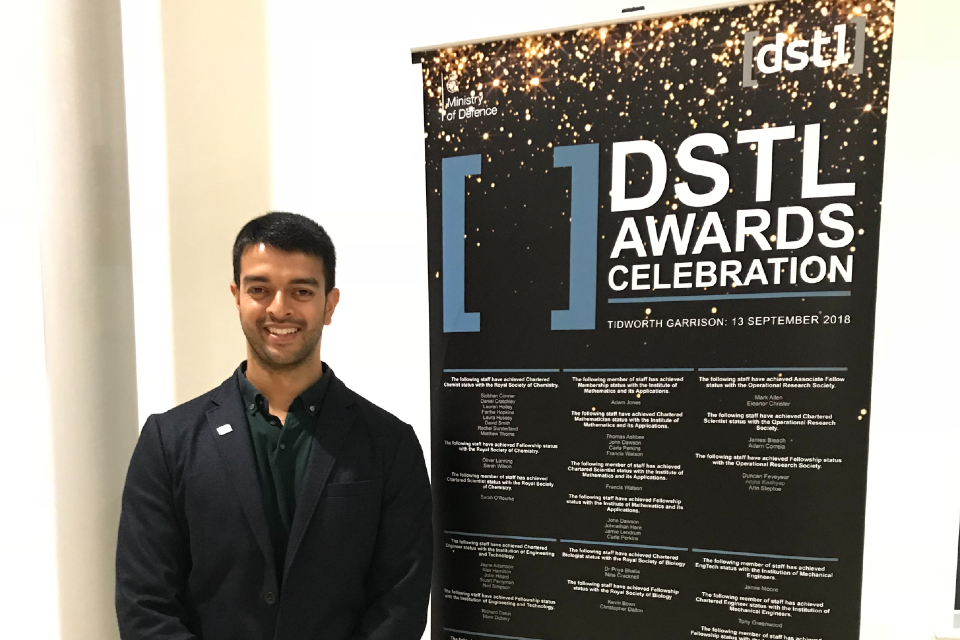
Junayd, principal space scientist
- Read about Junayd, principal space scientist at Dstl, who helps push the boundaries of space technology.
- Explore our current vacancies
We regularly work with schools, colleges and universities to encourage young people to study science, technology, engineering and maths (STEM) subjects and take up space careers. For example, we asked students from UTC Portsmouth to devise innovative ideas to solve space challenges such as debris and populating the moon.
Dstl offers apprenticeships, student placements and graduate opportunities in a broad range of STEM disciplines, including opportunities to work within our space science and technology capability.
Opportunities for suppliers
There are several routes to working with us. We particularly welcome companies who have not worked with defence before and small and medium-sized enterprises.
The main supplier framework is Serapis lot 2, ‘Science in space’.
Calls for innovation organised on Dstl’s behalf by DASA, help find, fund and fast-track innovation and technology. For example the Space to Innovate competition Bravo Drop looked for innovative solutions to address 2 specific challenges with the development of future space technologies.
Partnerships and projects
We work closely with international partners such as JAXA and the US Air Force Research Laboratory, other parts of government such as Space Command and the UK Space Agency. We also partner with a range of academic institutions including the universities of Warwick, Strathclyde and Birmingham. We also lead the Astrodynamics Community of Interest, a collaboration to track objects in space.
Talk to us about potential future partnerships and projects at DstlSpaceProgramme@dstl.gov.uk
Last updated 31 March 2022 + show all updates
-
Added link to Defence Space Strategy.
-
Fully updated with details of latest science and technology research and development by Dstl's Space capability.
-
First published.